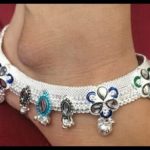Aktualizacja 24 November 2022
What does an orthodontist do during a check-up? Braces are used to correct dental problems such as malocclusion, crooked and crowded teeth. Orthodontic treatment takes several months or even years, during which the teeth are slowly moved into their correct position. In order for the treatment to progress, it is necessary to screw the appliances on a regular basis.
The orthodontist also conducts follow-up visits to check that everything is in order with the braces. It is also a great opportunity to talk to the patient, who can keep his orthodontist informed about private feelings in this emerging pain. Follow-up visits are an opportunity for orthodontists to check the progress of treatment.
Orthodontics
An orthodontic checkup is a visit to an orthodontist after treatment or braces. Orthodontics is a branch of dentistry that deals with the treatment or correction of tooth misalignment and malocclusion. A specialist in this field is called an orthodontist. Teeth are one of the strongest parts of the body and are responsible for a number of key activities such as chewing and biting. The cells that give rise to the tooth buds begin to emerge in the early weeks of conception. These buds develop as the baby grows older. By about six months of age, the baby’s first tooth appears. The teeth that appear first are called deciduous or milk teeth. They are also referred to as temporary because they will soon disintegrate to make way for the permanent ones. Anyway, proper alignment of the teeth becomes essential. Otherwise, various problems with the mouth and teeth may arise, such as problems with biting and chewing, and excessive strain on the facial muscles. Some may also feel conscious of what their teeth look like. Dental problems, especially those that have something to do with alignment and bite, can be corrected with braces. Typical orthodontic treatment includes: a complete dental examination, including an X-ray, and extraction if necessary. In addition, dental impressions are made and braces are placed on the teeth. Some may also feel conscious of what their teeth look like. Dental problems, especially those that have something to do with alignment and bite, can be corrected with braces. Typical orthodontic treatment includes: a complete dental examination, including an X-ray, and extraction if necessary. In addition, dental impressions are made and braces are placed on the teeth. Some may also feel conscious of what their teeth look like. Dental problems, especially those that have something to do with alignment and bite, can be corrected with braces. Typical orthodontic treatment includes: a complete dental examination, including an X-ray, and extraction if necessary. In addition, dental impressions are made and braces are placed on the teeth.
- Przeprowadzki firm w Szczecinie
- Wosk do aparatów ortodontycznych
- Pierwsze tygodnie życia dziecka ? wizyta u ortopedy?
Adjusting the orthodontic appliance
Your orthodontist will give you instructions on any changes that have occurred since this visit. For example, you may need to wear the elastics for the first time, so we’ll show you how to put them on and take them off for eating and brushing your teeth, but you can expect some slight discomfort with your new wires. Does it hurt when the braces are tightened? After the braces are tightened by the orthodontist, the teeth may be sore for several hours to several days. After this time, the teeth get used to the new archwire and the pain subsides. Sometimes you don’t feel any pressure after the visit, while at other visits you may experience it. You can take over-the-counter painkillers. These drugs should only be used for a few days. In the rare event that the pain persists after this time, an orthodontist should be contacted. When you’re home and your teeth are sore, you can apply a cold/ice pack to the outside of your jaw and lower cheeks. A cold compress can reduce inflammation and relieve discomfort. Drinking ice cold water can also help numb sore gums and reduce inflammation. You can also try a topical oral anesthetic gel for the gums. Apply the gel with a clean finger to desensitize areas of the mouth that are uncomfortable. Even massaging your gums with your finger can provide some relief as it stimulates blood flow to that area. You can also try a topical oral anesthetic gel for the gums. Apply the gel with a clean finger to desensitize areas of the mouth that are uncomfortable. Even massaging your gums with your finger can provide some relief as it stimulates blood flow to that area. You can also try a topical oral anesthetic gel for the gums. Apply the gel with a clean finger to desensitize areas of the mouth that are uncomfortable. Even massaging your gums with your finger can provide some relief as it stimulates blood flow to that area.
How is the check-up at the orthodontist going?
Orthodontic check-ups are scheduled every 4 to 6 weeks, depending on the progress of tooth movement. During this time, the orthodontist performs the following actions. The orthodontist checks the condition of the teeth and surrounding parts such as lips, cheeks and gums. The orthodontist makes the necessary adjustments. For example, it can change or move strips as well as wires. This is essential for the teeth to be gradually but correctly guided towards their ideal positions. New tests, such as x-rays of the teeth, are carried out if necessary. The orthodontist may also need to address the following issues. Emergency orthodontics – this refers to situations that require immediate or urgent attention and correction from the orthodontist. These include broken or loose wires and ligatures, which can be uncomfortable and cause damage not only to the mouth, but also to the rest of the appliance. General discomfort – getting braces can be painful or uncomfortable in the first few days. If the patient finds it unbearable, the orthodontist may prescribe painkillers. Advice – The orthodontist is the best person to ask about which braces are best and when to replace them, for example in the case of braces. Regular visits to the orthodontist guarantee even better results. which you can ask about which braces are best and when to replace them, e.g. in the case of braces. Regular visits to the orthodontist guarantee even better results. which you can ask about which braces are best and when to replace them, e.g. in the case of braces. Regular visits to the orthodontist guarantee even better results.
- Jakie nowoczesne meble zastosować w salonie? Jak malować ściany?
- Czym kierować się, aby wybrać dobrego stomatologa?









